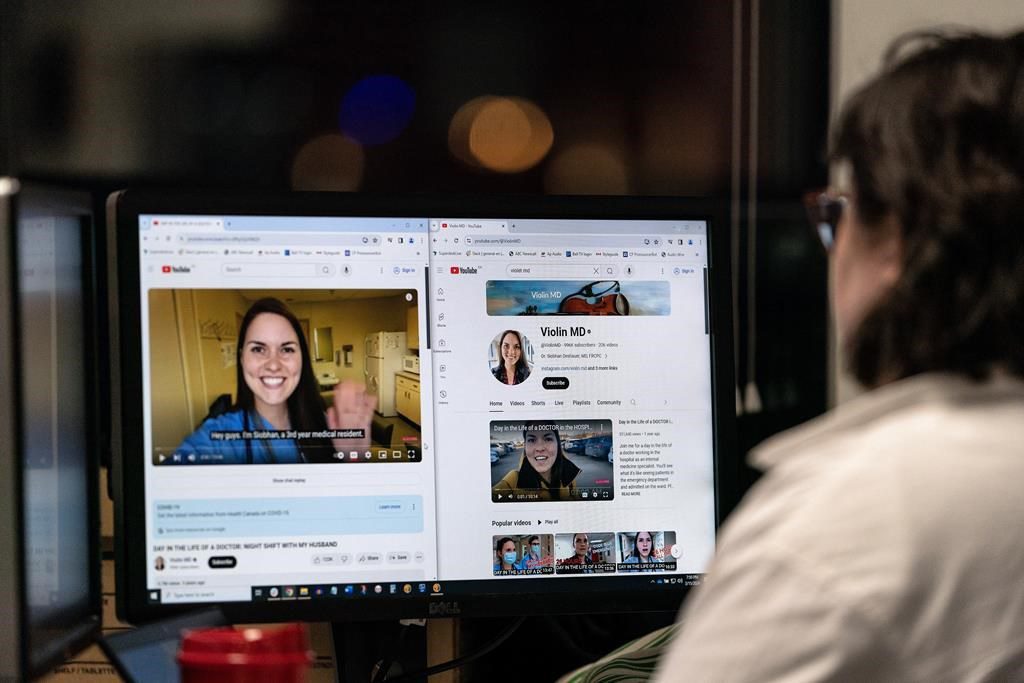When Dr. Siobhan Deshauer creates online videos, her main aim is to explain medicine in a way that is easy to understand. Her secondary goal is?
“I refer to it as ‘smuggling in education,'” said the doctor and YouTuber, who has almost a million subscribers on the platform. “You come for the mystery and excitement, but I'm also introducing important topics that I'm passionate about.”
Some experts suggest that one of the most effective ways to combat a growing amount of medical misinformation on on social media is to overwhelm it with engaging content supported by science, and Deshauer, a specialist in internal medicine and rheumatology based in Ontario, is part of a growing group of doctors and researchers doing just that.
For instance, in one of her medical mystery videos, Deshauer shares the story of a woman who suffered from lead poisoning. Doctors took a long time to identify the cause of her symptoms, but ultimately discovered they were due to lead in the Ayurvedic supplements she consumed.
It’s an intriguing video with a title intended to capture your attention: “Deadly illness from THIS SUPPLEMENT: Medical Mystery.” The video’s thumbnail depicts Deshauer looking surprised against a bright blue backdrop. In the background, bold letters spell out “POISONED” and an arrow points to an X-ray image of someone’s lower leg.
These elements grab the viewer's interest, but for Deshauer, much of the video's value comes from the “smuggled-in” education.
“I introduced the concept of how supplements are regulated and what to consider when purchasing them. How can you ensure your safety? That wasn’t the focus or title of the video, but viewers would learn those things,” she explained.
Deshauer, also known as ViolinMD online in reference to her previous career as a violinist, stated that she started making videos to document her learning experiences while in school.
“As the viewer community grew, I had the opportunity to hear their comments, concerns, and what they had encountered in health care, as well as some of their fears,” she said. “I realized that many fears related to health care stemmed from not being able to access it or see what goes on behind closed doors.”
Experts stated that the algorithms delivering appealing content to users can reinforce these fears. They tend to promote sensationalized misinformation and generalizations, turning social media platforms into a detrimental echo chamber for some users, according to Timothy Caulfield, a professor of health policy and law at the University of Alberta, who has become one of Canada’s most vocal figures on this issue in recent years.
“This will be an ongoing battle,” he remarked. “There won’t be a single simple solution to solve this extremely complex cultural, social, economic, and technological challenge. However, we are accumulating more and more solid research indicating the most effective approaches.”
Caulfield stated that the most successful science communicators employ some of the same strategies as those spreading misinformation, but they support it with accurate data rather than pseudoscience.
He said there are several individuals who are doing a good job at this. Dr. Jen Gunter, a gynecologist, has been doing this for a long time. She first started by refuting false information published by Gwyneth Paltrow’s wellness website Goop. Dr. Samir Gupta is also active on Instagram and TikTok, exposing wellness trends and false information.
Caulfield mentioned that some medical professionals don't consider carefully about how they present their content, but those who attract an audience are more mindful of that.
He suggested considering the appearance of your content. He noted that the clinical and scientific community often overlook this aspect, while those spreading misinformation pay attention to it.
He explained that one of those methods involves using easily shareable infographics and artwork.
Caulfield is part of the executive advisory committee for Science Up First, an initiative that aims to refute health misinformation. They encourage independent experts to create science-backed content, and the organization also produces some of its own.
Jonathan Jarry, a science communicator with McGill University’s Office for Science and Society, mentioned another strategy that involves using personal stories.
He advised scientists and medical professionals to share their personal experiences, as stories resonate more than tables and graphs.
However, he emphasized that these personal experiences must be supported by a body of evidence.
Jarry also stated that it's better to show people the evidence, rather than just telling them how they should feel.
He stated, “People don’t want to be told what to think. They don’t want you to be paternalistic. They want you to show them your work. Show them your research. Show them how you arrived at your conclusion,”. He mentioned that transparency builds trust.
Dr. Kathleen Ross, president of the Canadian Medical Association, mentioned that her organization has conducted polls showing that doctors are a trusted source of health information.
She expressed concern that at this time in Canada, many Canadians – almost seven million – lack access to a long-term primary care source for having these discussions. As a result, misinformation and the acceptance of misinformation pose a significant risk and lead to negative outcomes.
“To address that, we have to point people towards reliable sources.”




